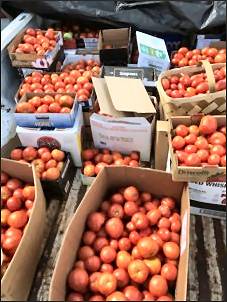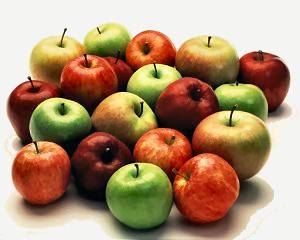By Jean Blish Siers *
 One of the more popular stories in the New York Times this past weekend was David Leonhardt’s “A Month Without Sugar.” In it, the columnist challenges us to spend 30 days with no added sugars in our diet, and offers a fun, interactive quiz to see where sugars might be hidden in our daily menus. That means the sugars naturally occurring in fruits and dairy, for instance, are fine to eat. But added sugars are verboten. Could you do it? Should you do it?
One of the more popular stories in the New York Times this past weekend was David Leonhardt’s “A Month Without Sugar.” In it, the columnist challenges us to spend 30 days with no added sugars in our diet, and offers a fun, interactive quiz to see where sugars might be hidden in our daily menus. That means the sugars naturally occurring in fruits and dairy, for instance, are fine to eat. But added sugars are verboten. Could you do it? Should you do it?
There is a lot of evidence that sugar, in its many forms, is one of the main causes of America’s obesity and diabetes epidemics. That includes the high fructose corn syrup we’ve heard so much about in recent years, but also any added sugars in processed foods, which you can identify on labels as words ending in “-ose.” These sugars are empty calories, offering an endorphin hit of pleasure, but no nutrients. And Leonhardt notes that sugars are linked not only to obesity and diabetes, but are also a contributing factor in certain cancers and the onset of Alzheimer’s.
What are the limits? The American Heart Association says adult men should eat no more than 36 grams of added sugar each day, while women should limit their sugars to 24 grams. And children – the target of Froot Loops and Frosted Flakes advertising – should keep their intake at less than 25 grams.
What does that look like? Consider that a 16-ounce bottle of Coke has 52 grams of sugar. A Snickers bar has 27 grams. Triscuits have no added sugars but their cousin, the sassier Wheat Thin, has 4 grams of added sugar.
 With just a little research, it becomes apparent that the more highly-processed a food is, generally speaking, the more likely it is to have added sugars, even where you least expect it. A serving of Prego pasta sauce, for instance, has 10 grams of added sugar. Even an Amy’s Cheese Pizza, made with organic flour and cheese, has 4 grams of added sugar.
With just a little research, it becomes apparent that the more highly-processed a food is, generally speaking, the more likely it is to have added sugars, even where you least expect it. A serving of Prego pasta sauce, for instance, has 10 grams of added sugar. Even an Amy’s Cheese Pizza, made with organic flour and cheese, has 4 grams of added sugar.
I think of this often when we take big boxes of tomatoes to a soup kitchen, knowing they’ll be able to make a healthful sauce without a lot of the additives that just aren’t good for the people they serve. Or when we take muscadine grapes to the elderly, or apples to a church that serves families with children (a serving of Mott’s Original Apple Sauce contains 22 grams of sugar.) I’m thrilled to know that in the summer, families are eating farm-fresh watermelon instead of an Ice Pop (7 grams of sugar) or Fudgcicles (14 grams of sugar).
 Society of St. Andrew’s emphasis on getting fresh fruits and vegetables to our neediest neighbors is an important part of helping them live healthier, better lives. When we consider that about a quarter of our seniors and our children live in poverty in North Carolina, we know that buying fresh fruits (if they even have access to them) can often feel like a luxury.
Society of St. Andrew’s emphasis on getting fresh fruits and vegetables to our neediest neighbors is an important part of helping them live healthier, better lives. When we consider that about a quarter of our seniors and our children live in poverty in North Carolina, we know that buying fresh fruits (if they even have access to them) can often feel like a luxury.
As you make your resolutions for 2017, please consider reducing sugars in your own diet. But also consider that for every dollar you donate to SoSA, we can provide up to 50 servings of unprocessed, nutritious produce out to those who need it. Can’t we all resolve in 2017 to do better for everyone in our communities?
* Jean Blish Siers is SoSA’s Charlotte Area Gleaning Coordinator.
JAN
2017

